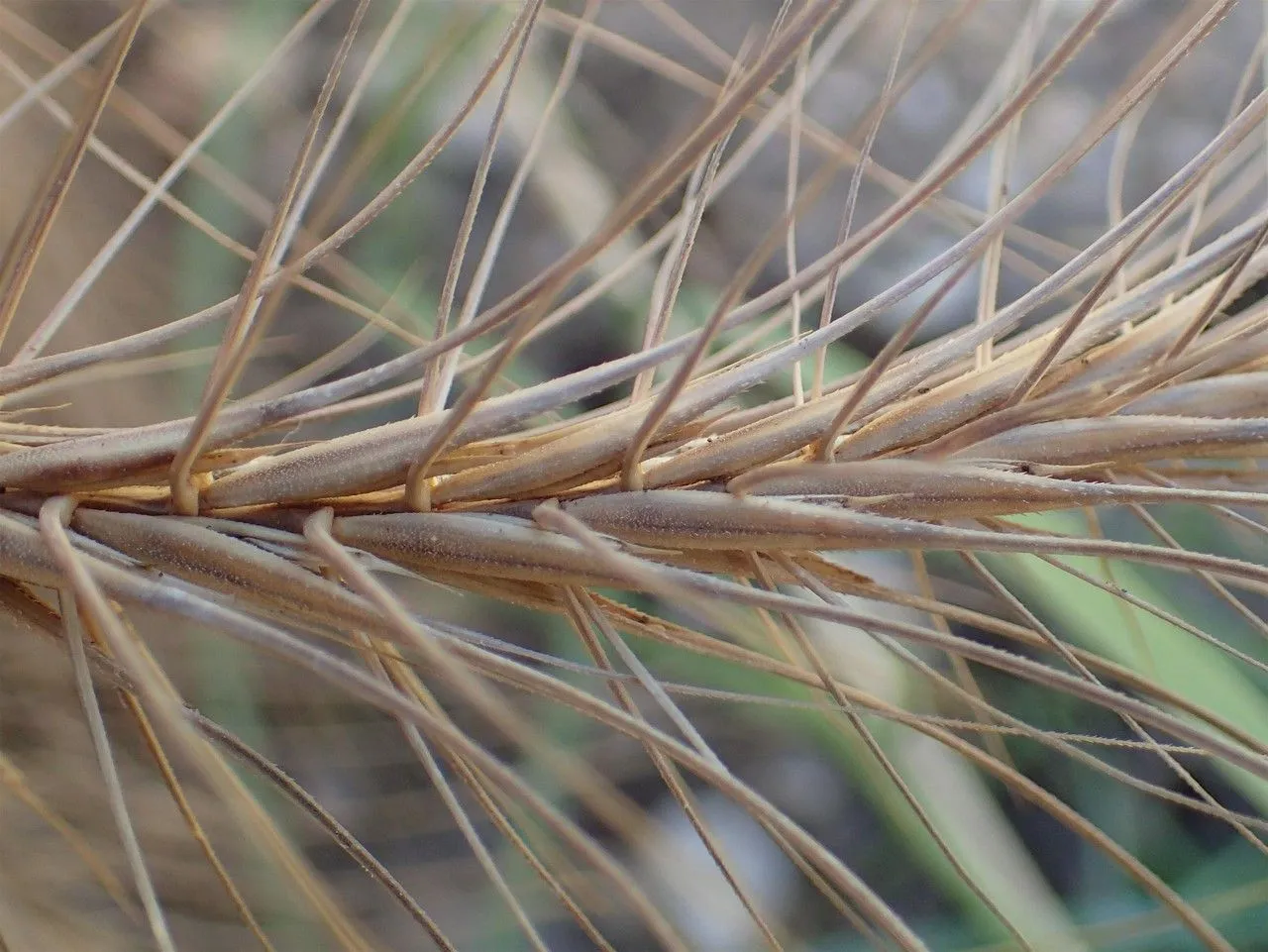
Author: (L.) Nevski
Bibliography: Trudy Bot. Inst. Akad. Nauk S.S.S.R., Ser. 1, Fl. Sist. Vyssh. Rast. 1: 22 (1933)
Year: 1933
Status: accepted
Rank: species
Genus: Taeniatherum
Vegetable: False
Observations: SC. Europe to Medit. and Pakistan
Medusahead-rye, known scientifically as Taeniatherum caput-medusae, is a distinctive species within the Poaceae family. This grass species can be observed across a broad geographical expanse, stretching from Southern and Central Europe to the Mediterranean region, and extending as far as Pakistan. Its intriguing common name is derived from its unique appearance, reminiscent of the mythological character Medusa with her serpentine hair.
First documented in the publication “Trudy Bot. Inst. Akad. Nauk S.S.S.R., Ser. 1, Fl. Sist. Vyssh. Rast. 1: 22 (1933)” by (L.) Nevski, Medusahead-rye has since been the subject of extensive botanical study and interest due to its notable adaptability and impact on its environment.
Medusahead-rye thrives in various climates and soil conditions, often establishing itself in disturbed areas where it can outcompete native vegetation. This capability to dominate landscapes makes it a species of significant ecological concern. Its dense and mat-like growth pattern can impede the regeneration of native plants, thereby altering local ecosystems.
Moreover, the plant’s stiff awns and silica-rich tissues make it unpalatable and often harmful to grazing animals, thereby impacting agricultural practices. The management and control of Taeniatherum caput-medusae have thus become crucial areas of focus for botanists and conservationists aiming to maintain biodiversity and sustainable land use in affected regions.
Overall, Taeniatherum caput-medusae represents a fascinating yet challenging example of nature’s diversity and resilience, prompting ongoing research and conservation efforts to mitigate its spread while understanding its ecological niches and adaptations.
Eng: medusa’s-head, medusahead, medusahead-rye
Dan: tveblomstret byg
Est: kare odrik
Swe: medusagräs
En: Medusahead-rye, Medusa’s-head, Medusahead, Medusahead wildrye
Ar: سفسوف (سَفسوف)، ابو حريبه (أبو حِريبه)
Ca: Cap de medusa
Da: Tveblomstret byg
Et: Kare odrik
Fr: Taéniathérum tête-de-méduse, Tête-de-méduse
De: Medusenhaupt
He: מלענת ארוכת-מלענים
It: Orzo testa di medusa
Pt-br: Centeio-silvestre-cabe�a-de-Medusa
Sv: Medusagräs
Taken Jun 18, 2017 by Yoan MARTIN (cc-by-sa)
Taken Jun 18, 2017 by Yoan MARTIN (cc-by-sa)
Taken Jun 18, 2017 by Yoan MARTIN (cc-by-sa)
Taken Jun 18, 2017 by Yoan MARTIN (cc-by-sa)
Taken Jun 18, 2017 by Yoan MARTIN (cc-by-sa)
Taken May 15, 2009 by Photoflora – Benoit BOCK (©)
Taken Jul 15, 2006 by Photoflora – Jean-Luc TASSET (©)
Taken Jul 15, 2006 by Photoflora – Jean-Luc TASSET (©)
Taken Apr 18, 2014 by EOL − Valter Jacinto (cc-by-nc-sa)
Taken Jun 18, 2017 by Yoan MARTIN (cc-by-sa)
Taken Aug 15, 2007 by Photoflora – Jean-Luc TASSET (©)
Taken Apr 15, 2007 by Photoflora – Jean-Luc TASSET (©)
Taken Jan 1, 1900 by EOL − Ori Fragman-Sapir (cc-by-nc-sa)
Taken Jan 1, 1900 by EOL − Ori Fragman-Sapir (cc-by-nc-sa)
Taken Sep 25, 2017 by Tela Botanica − Genevieve BOTTI (cc-by-sa)
Taken Jun 3, 2020 by Didier Corlay (cc-by-sa)
Taken Jul 17, 2020 by Fransoaz (cc-by-sa)
Taken Jul 17, 2020 by Fransoaz (cc-by-sa)
Taken Jul 15, 2006 by Photoflora – Jean-Luc TASSET (©)
Taken Jun 3, 2020 by Anne Claire b (cc-by-sa)
Taken Jul 15, 2006 by Photoflora – Benoit BOCK (©)
Taken May 15, 2009 by Photoflora – Benoit BOCK (©)
Taken May 15, 2009 by Photoflora – Benoit BOCK (©)
Taken Jan 1, 1970 by Photoflora – L’Abbé COSTE (©)
Taken May 15, 2009 by Photoflora – Benoit BOCK (©)
Taken Apr 18, 2014 by EOL − Valter Jacinto (cc-by-nc-sa)
© copyright of the Board of Trustees of the Royal Botanic Gardens, Kew.
© copyright of the Board of Trustees of the Royal Botanic Gardens, Kew.
© copyright of the Board of Trustees of the Royal Botanic Gardens, Kew.
Growth habit: Graminoid
Ph maximum: 8.0
Ph minimum: 7.5
Light: 9
Atmospheric humidity: 3
Soil nutriments: 6
Family: Myrtaceae Author: (F.Muell.) K.D.Hill & L.A.S.Johnson Bibliography: Telopea 6: 402 (1995) Year: 1995 Status:…
Family: Rubiaceae Author: Pierre ex A.Froehner Bibliography: Notizbl. Bot. Gart. Berlin-Dahlem 1: 237 (1897) Year:…
Family: Sapindaceae Author: Koidz. Bibliography: J. Coll. Sci. Imp. Univ. Tokyo 32(1): 38 (1911) Year:…
Family: Asteraceae Author: A.Gray Bibliography: Pacif. Railr. Rep.: 107 (1857) Year: 1857 Status: accepted Rank:…
Family: Fabaceae Author: Medik. Bibliography: Vorles. Churpfälz. Phys.-Ökon. Ges. 2: 398 (1787) Year: 1787 Status:…
Family: Aspleniaceae Author: (Cav.) Alston Bibliography: Bull. Misc. Inform. Kew 1932: 309 (1932) Year: 1932…